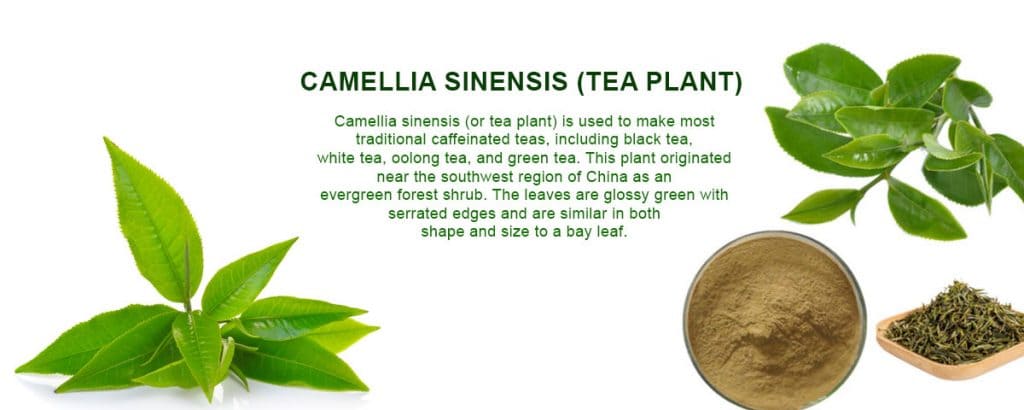Almost every tea enjoyed comes from a specific species of plant known as the camellia sinensis. There are two varieties of this plant that each yield different types of teas, with specific characteristics that define each one. Black tea, called “red tea” in China, is the strongest-tasting variety due to its oxidation time in processing. Oolong tea, known for its flowery notes similar to green tea, is less oxidized. And green tea, the mildest variety, does not undergo oxidation at all and is pan-fried in processing to prevent oxidation from occurring.
Camellia Sinensis ‘s Origins
Camellia sinensis (or tea plant) is used to make most traditional caffeinated teas, including black tea, white tea, oolong tea, and green tea. This plant originated near the southwest region of China as an evergreen forest shrub. The leaves are glossy green with serrated edges and are similar in both shape and size to a bay leaf.
Tea plant was first stumbled upon by accident—as the story goes—in 2737 B.C.E. The emperor at the time was boiling water in his garden when a leaf from the overhanging camellia sinensis tree drifted into his pot. The combination yielded a drink that compelled him to research the tree further, uncovering both medicinal and palatable properties.
Varieties of Camellia Sinensis
Two varieties of the tea plant make up some of the most popular types of tea. Camellia sinensis sinensis (Chinese tea) is native to China and thrives in cool temperatures and high elevations. It is commonly grown on mountain slopes, producing a sweeter, gentler taste indicative to both green tea and white tea. Camellia sinensis assamica (Assam tea or Indian tea), on the other hand, thrives in the Assam region of Northern India. This plant is considered more tropical than its Chinese variety, growing larger and producing bigger leaves (due to a climate with plenty of rain and warm temperatures). This variety is used for robust teas like black tea, oolong, and pu-erh.






